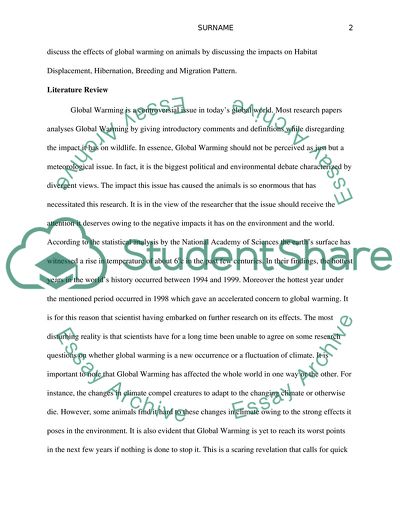Cite this document
(How Global Warming Affects Animals Term Paper Example | Topics and Well Written Essays - 3000 words - 1, n.d.)
How Global Warming Affects Animals Term Paper Example | Topics and Well Written Essays - 3000 words - 1. Retrieved from https://studentshare.org/environmental-studies/1801736-how-global-warming-affects-animals
How Global Warming Affects Animals Term Paper Example | Topics and Well Written Essays - 3000 words - 1. Retrieved from https://studentshare.org/environmental-studies/1801736-how-global-warming-affects-animals
(How Global Warming Affects Animals Term Paper Example | Topics and Well Written Essays - 3000 Words - 1)
How Global Warming Affects Animals Term Paper Example | Topics and Well Written Essays - 3000 Words - 1. https://studentshare.org/environmental-studies/1801736-how-global-warming-affects-animals.
How Global Warming Affects Animals Term Paper Example | Topics and Well Written Essays - 3000 Words - 1. https://studentshare.org/environmental-studies/1801736-how-global-warming-affects-animals.
“How Global Warming Affects Animals Term Paper Example | Topics and Well Written Essays - 3000 Words - 1”, n.d. https://studentshare.org/environmental-studies/1801736-how-global-warming-affects-animals.


